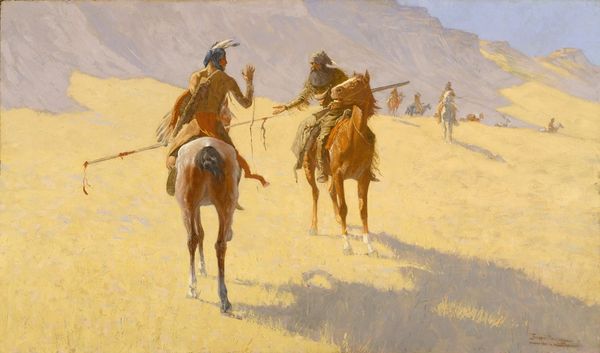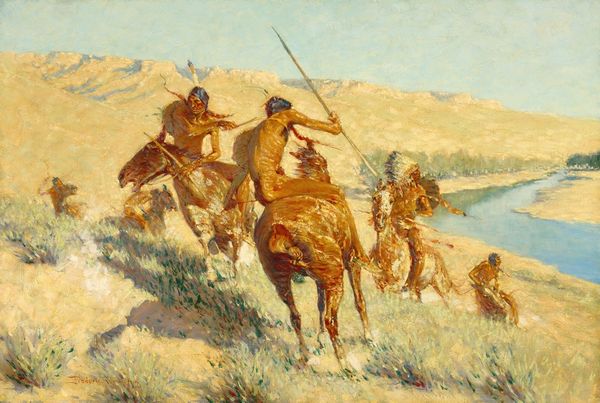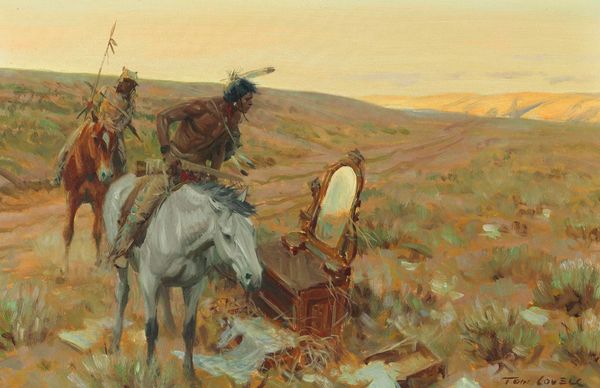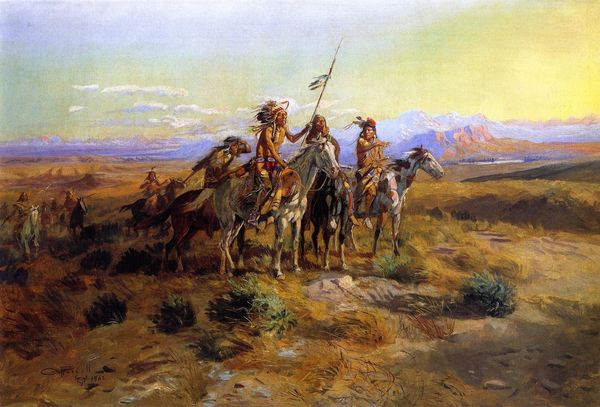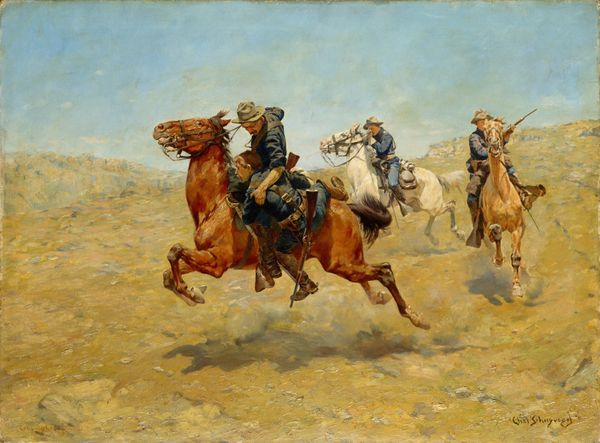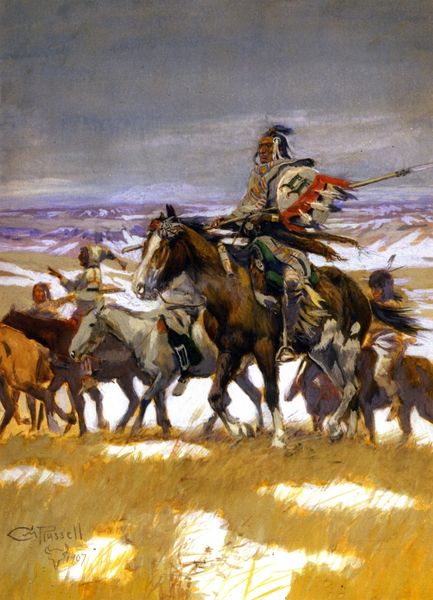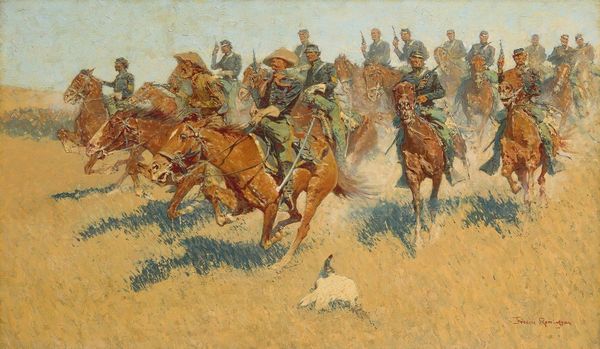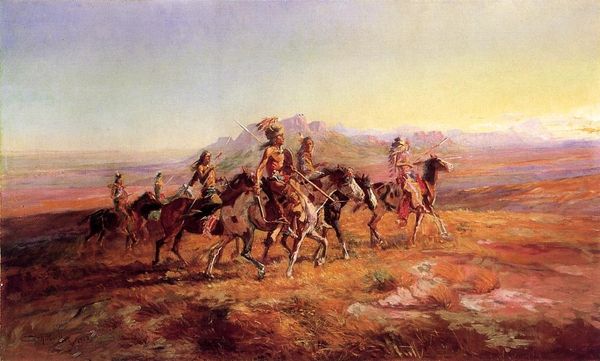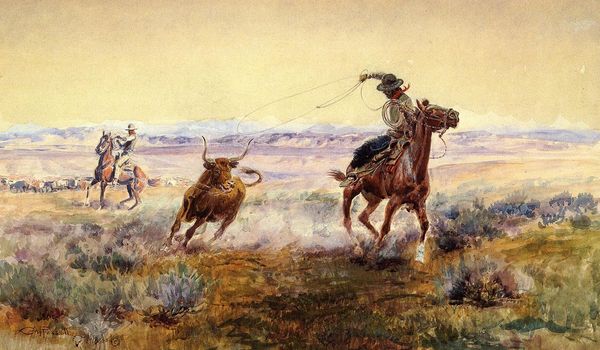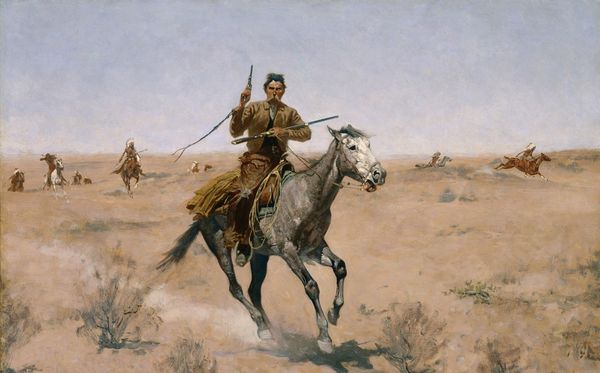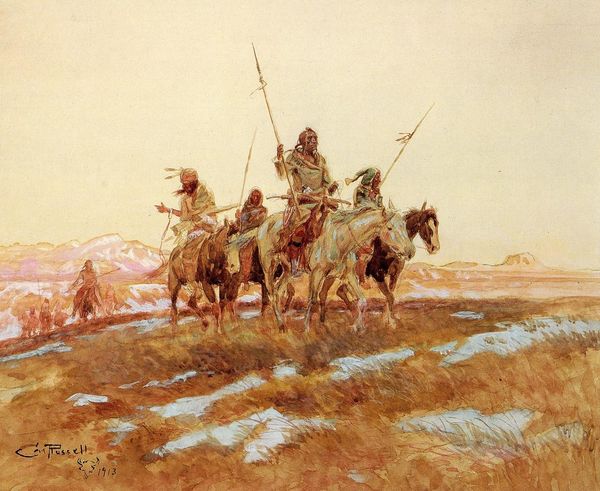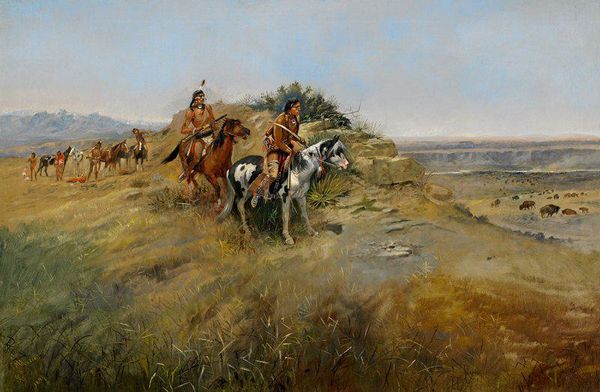
painting, oil-paint
#
figurative
#
painting
#
oil-paint
#
landscape
#
figuration
#
oil painting
#
genre-painting
#
watercolor
#
realism
Copyright: Public Domain: Artvee
Editor: This is Frederic Remington's "Change of Ownership" from 1903, an oil painting. It depicts a group of Indigenous people on horseback, driving a herd of horses across a plains landscape. I'm struck by the almost dusty, chaotic energy. What do you see in this piece? Curator: Well, considering Remington’s method, it's vital to recognize how he constructed this scene. Think about the material realities behind this “Wild West” fantasy. What kind of labor, what means of production allowed him to create this idealized, romantic view? What processes facilitated this art production, and at what cost to the represented people? Editor: So, beyond just depicting a scene, you’re asking us to consider how the image itself came to be? The oil paints, the canvas... but more so, Remington’s choices and perspectives. Curator: Precisely. He’s presenting a very specific, and commercially successful, narrative. We must deconstruct the raw materials—pigments, canvas, but also cultural biases—that went into building that narrative. Think about how Remington consumed images and stories and spat them out on canvas for his consumers. Consider this a sort of manufactured nostalgia sold at a profit, obfuscating real social inequities. Editor: So the very process of creating this romanticized vision served a particular agenda. Is the painting then about control over both the depicted landscape and the image of the West itself? Curator: Yes! And we see this ownership reflected not only thematically within the image—the change of ownership of the horses—but in the way the landscape, the Native Americans and the era were presented to the American public. A very potent image! Editor: That reframes the artwork quite powerfully! I’m going to rethink how I approach Western art moving forward. Curator: Exactly the point. Art as an item and expression, shaped by tangible and intangible materials.
Comments
No comments
Be the first to comment and join the conversation on the ultimate creative platform.
